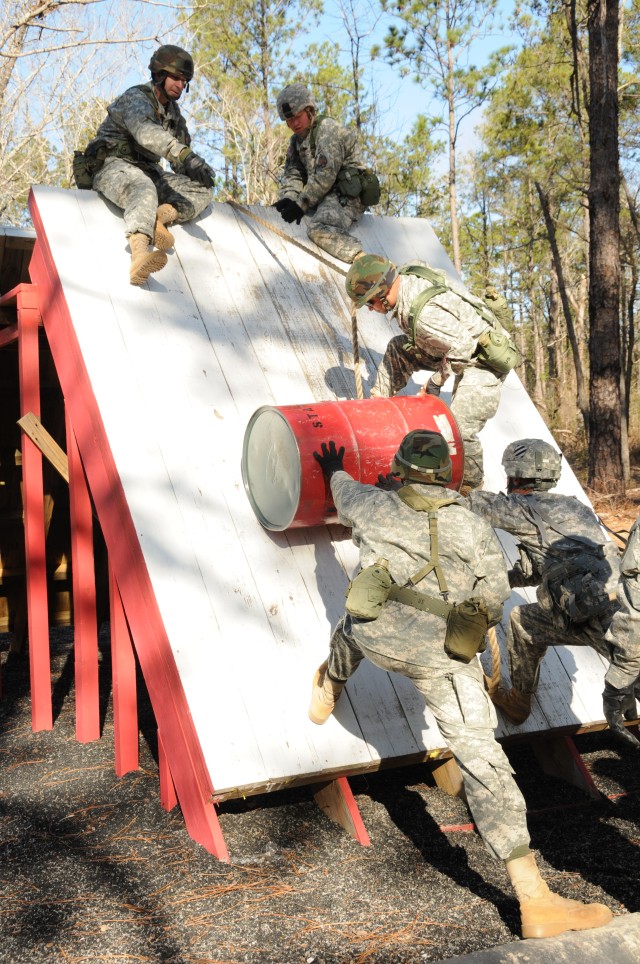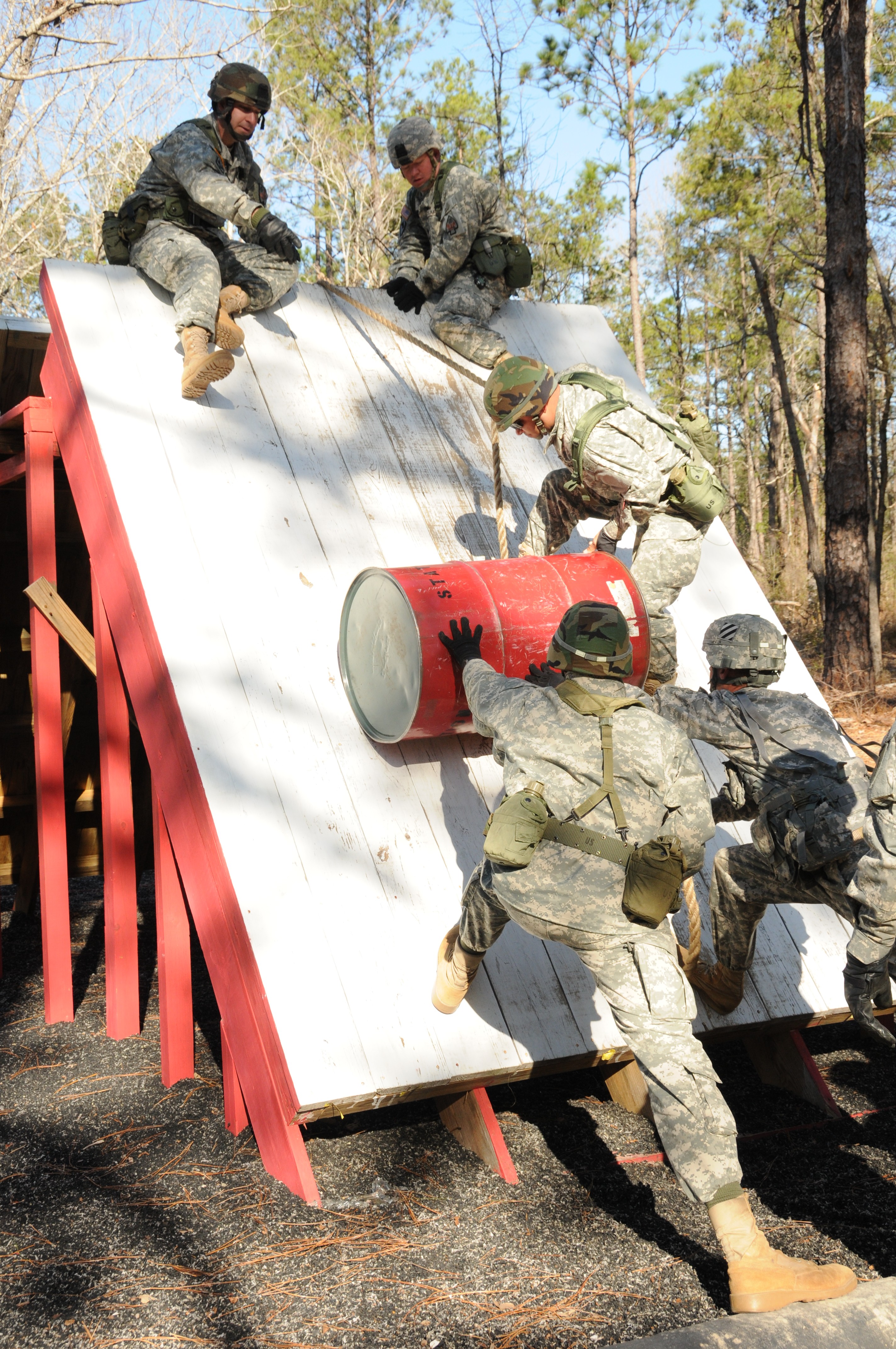FORT RUCKER, Ala.--Nearly 80 Fort Rucker Noncommissioned Officer Academy (NCOA) students tested their leadership and communication skills here Feb. 20 during a Leadership Reaction Course (LRC) exercise at the post's Airport Road Forward Operating Base.
The LRC includes nine progressively challenging obstacle stations. Soldiers worked in nine teams of eight to 10 people equipped with two 6-foot-long boards and a piece of rope to assist in moving across each obstacle. Teams were allowed 20 minutes for each station.
Sgt. 1st Class Charles Kidd, B Company, 1st Battalion, 52nd Aviation Regiment, Fort Wainwright, Alaska, said the time constraint made the course challenging.
He attributed his team's win to devising a plan that would work the first time through.
The initial station was a gravel-filled box approximately 20 feet long with two horizontal planks at either end with a dinner plate-sized white circle, the "safe spot," in between. The challenge was to use the supplies to move the entire team across the box. Soldiers could only step on the boards and anything painted white, which included the top of the planks and the circle.
If any team member touched anything black - all of the gravel filling the box - that team member or piece of equipment was required to restart.
Touching anything painted red - the sides of the planks at this particular station - resulted in a 10-second penalty added to the team's competition time.
"It was a blast," said winning team member Staff Sgt. Matthew Blanchard, 6th Battalion, 17th Regiment Combat Aviation Battalion also from Fort Wainwright, Alaska.
"I really enjoyed it. (The LRC) took away from the regular mundane," Blanchard said.
NCOA Assistant Commandant 1st Sgt. Michael McGee plans these events and said the LRCs allow him to test the noncommissioned officers' leadership abilities. At each obstacle, one NCO is given command over his or her small group and must make the best decisions to complete the obstacle in the least amount of time possible without making any mistakes. He said everyone has fun regardless of where they finish because it gets them out of the classroom.
"It's a cohesion, communication and team building (event)," said Sgt. 1st Class Gloria Cain, who assists in running the LRCs. "It takes a little bit of thinking on your feet."
Another obstacle resembled the shape of an upside-down "V" with a gap of about four feet in between the peak connected by a rope, which hangs over a red plank.
Teams must climb the 12-feet-high obstacle, assist their teammates in climbing it and drag a barrel up and over. They must beware of the black gravel surrounding the peak when trying to access it as well as be careful not to add time to their score by stepping on the top plank.
"All (of the teams) succeeded on this one today," Sgt. 1st Class Gene Tomlinson, NCO Academy Development Cell Bridge Chief, said of the reverse V-shaped obstacle. "If they have more confidence in their climbing abilities they tend to go faster."
Master Sgt. James Goins, First Sgt., B Company, 2nd Battalion, 25th Aviation Regiment, Hawaii, and a member of the winning team that received a pizza party afterward as a prize, said they were successful because they put together each individual's experience to come up with the best way to overcome an obstacle.
"You have a chance to see how people think," Goins said. "(You) think outside the box, in a safe way, to accomplish the mission."
Sgt. 1st Class John Fritz 3rd Battalion, 58th Aviation Operation Battalion, Germany, came in as part of the second-place team. He attributed their success to physical fitness and listening to one another to come up with the best solution.


Social Sharing